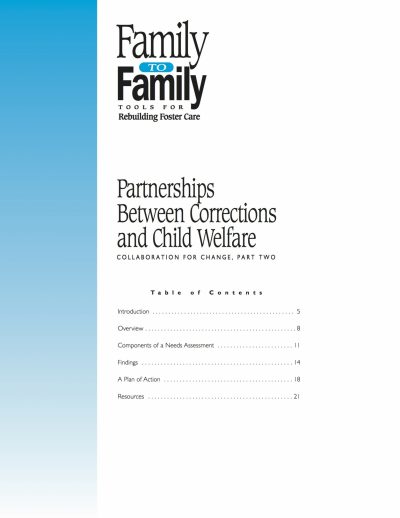Odds against children
Children of offenders are five times more likely than their peers to end up in prison themselves.

This guide is one of several tools within the foundation’s Family to Family Initiative established in 1992 to reconceptualize, redesign and reconstruct the foster care systems of targeted communities with a history of placing large numbers of children out of their homes (i.e., the states of Alabama, New Mexico, Ohio, Maryland and Pennsylvania, as well as five Georgia counties and Los Angeles County). Partnerships Between Corrections and Child Welfare: Collaboration for Change, Part Two explores the gap between the systems--which results in tremendous hardship on children, caretakers, families and workers in both places--and what can be done to improve coordination without a great deal of additional funding.
Contrary to the assumption that a parent’s arrest always means the case is hopeless, parental involvement in the criminal justice system can be managed in a way that preserves and strengthens a family. For example, visitations provide a way to build and maintain essential family bonds.
We hope you'll find value in this report. We’d love to get a little information from you, which we'll use to notify you about relevant new resources.